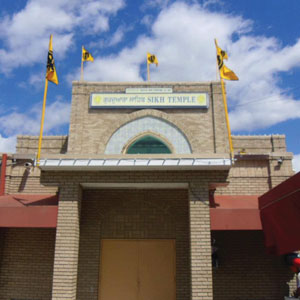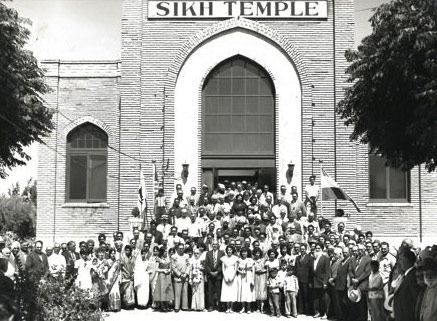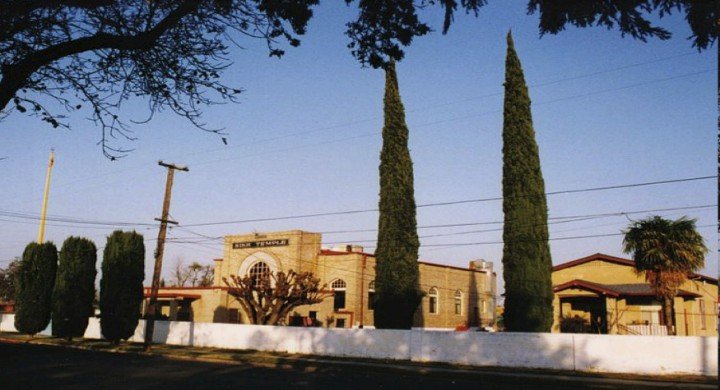 |
| Gurdwaras Complete 100 Years What’s striking about the Stockton Gurdwara, America’s oldest Sikh temple, is that the original building still stands. But these days, understandably, that’s not where the worshippers gather, as they used to |
But such a narrative misrepresents and obscures a much longer history, especially at the turn of the century, when several thousand Indians settled in regions like Northern California. It's the largely untold story of the migration of Sikhs, Hindus, and Muslims from pre-partition India from the late 19th century up until the passage of the Asian Exclusion Act (which was passed to limit Chinese, Filipino, Japanese, and Indian migration).
Even before the act was passed, migrants from India faced many obstacles, including systemic discrimination and outright violence. The 1907 "anti-Hindoo" riots in Bellingham, Washington, for example, targeted mostly Sikh laborers whom whites had accused of stealing lumber jobs. Bellingham is only about an hour north of Bothell, Washington, where a Hindu temple was recently vandalized.
Still, in their small conclaves, the immigrants of different faiths began to find ways to develop a community identity, in part because they were largely shunned by whites. At the time, about two-thirds of Indian immigrants in California at the turn of the century were Sikh, and as a result, the Pacific Coast Khalsa Diwan Society - a gurdwara - opened in Stockton in 1911. [See below - ED]
Because Hindus and Muslims in the region were still small in number, and unable to get the approvals to build any sites of worship, the Stockton gurdwara served as a place of worship for all three religions. While Hindu-Sikh co-worship was common in northern India for centuries, a place for all three groups in the United States was created by circumstance and sustained through interfaith bonds.
Over the next three decades, the Khalsa Diwan hosted Hindu leaders and Muslim leaders alike, including the Hindu leader Swami Yogananda, who founded the Self-Realization Fellowship and authored the world-renowned Autobiography of a Yogi. Moreover, it served as a meeting ground for those seeking to build support for the Indian freedom struggle, especially those involved with the Ghadar Party. Despite having different religions, Sikhs, Muslims, and Hindus still felt strongly connected to India and identified strongly with Indian nationalism.

While the gurdwara did not permit non-Sikhs from holding leadership positions, both Hindus and Muslims felt intimately connected to the house of worship, attending Sikh celebrations such as Gurpurab, which commemorates the birth of Guru Nanak. Baisakhi, a harvest festival celebrated by Sikhs and most Punjabi Hindus, was also a community celebration at a time when Indians were largely isolated.
Even after Muslim and Hindu populations in Stockton and other parts of northern California grew, they continued to come occasionally to the Khalsa Diwan Society out of respect for the shared history of the groups. While the India-Pakistan partition in 1947 diminished some of the interfaith cooperation, the gurdwara continued to keep its doors open to Hindus and Muslims. Even the Khalistani Sikh separatist movement that began in the late 1960s in India didn't hurt ties among the older generation of the community living in Stockton.
Today, the legacy of Khalsa Diwan Society is a reminder that Hindu, Muslim, and Sikh communities have had a longstanding history of cooperation and collaboration in this country. In California, for instance, the state's long overdue frameworks revision could incorporate this history in order to help normalize understanding about the presence of the three religious groups - and their friendship - long before post-1965 immigration became the dominant narrative about South Asian Americans.
From a practical sense, the story of a gurdwara built over a century ago might even provide a model today in areas where the three faiths continue to be small and marginalized, and where the search for both community and safe space remains elusive.
| Commemorating the Sikh-American Centennial |
 |
| “Sikhs Honor Rich History in Stockton,” The Stockton Record, September 22, 2012: |
| “The temple, at the far end of South Grant Street, also is home to thousands of Sikhs on the West Coast. For them, it represents an almost-mystical place deserving of pilgrimage, reverence and historical study. This fall, Stockton Gurdwara Sahib celebrates a century of history, some of it surprising: » It is oldest temple in the United States; the birthplace of Sikhism in America. » It has a direct link to Indian independence and was home to the Ghadar (Revolution) Party, which agitated for a free, independent and united India four decades before that status was achieved in 1950. Sikhs describe Stockton as ‘ground zero for India’s independence struggle.’ » America’s first Punjabi-language newspaper was published by the Ghadar Party and financed by Stockton Sikhs. » Bhagar Singh Thind, a civil rights pioneer and the first Sikh to serve in the U.S. Army (during World War I), was a member of Stockton Gurdwara. » Starting in 1957, Democrat Dalip Singh Saund served three terms in the House of Representatives. He was the first Asian, Indian and Sikh elected to Congress. Before that, he was secretary of Stockton Gurdwara. For many, the compound on South Grant – which will be renamed Sikh Temple Street on Jan. 1 – is hallowed ground.” – – – Read the rest here. |
 |
